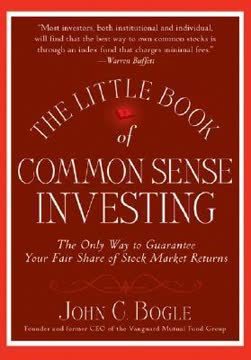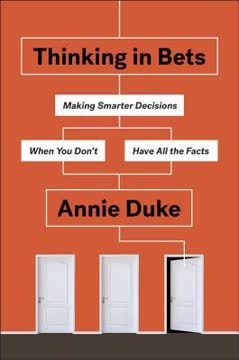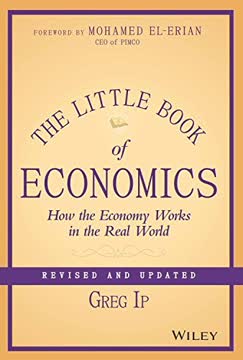Key Takeaways
1. The Core Drivers of National Wealth
In the long run, though, a country becomes rich or stagnates depending on whether it has the right mix of people, capital, and ideas.
Long-term prosperity hinges on a nation's productive potential, which is fundamentally built upon three pillars: its population, the capital it invests, and the innovative ideas it generates. A growing population provides the workforce, while capital (investment in infrastructure, equipment, and human skills) and new ideas (technological advancements, efficient processes) enhance worker productivity. The dramatic reversal of fortunes between Japan and the United States in the 1990s illustrates this: Japan stagnated as its population aged and it resisted creative destruction, while the U.S. boomed by embracing new technologies like the Internet.
Ideas are the true miracle-workers of economic growth, overturning the law of diminishing returns that limits growth from capital alone. Unlike physical capital, a new idea, if not protected by patents, can be reproduced endlessly for free, benefiting everyone as it spreads. This leads to:
- New Business Processes: Like Adam Smith's pin factory or Wal-Mart's supply chain innovations.
- New Products: Constantly improving software browsers at zero cost to consumers.
- Strategic Copying: Countries like Japan and China turbo-charged their development by adapting existing ideas and technologies from advanced economies.
Government's crucial role is to nurture this growth environment. This involves investing in human capital through education, upholding the rule of law to protect property and contracts, and allowing free markets to operate. Free markets foster "creative destruction," where old, unproductive industries die, freeing up capital and labor for new, more efficient ones. While the size of government matters less than its quality and honesty, these foundational elements ensure that innovation and investment can flourish, leading to sustained economic prosperity.
2. Understanding Economic Cycles: Boom, Bust, and Recovery
Every business expansion eventually dies. Only the cause of death changes.
Economic activity fluctuates in cycles of expansion and recession, driven largely by the interplay between expectations and reality. Bullish expectations fuel investment, stock prices, and lending, creating a self-reinforcing upward spiral. However, these expectations inevitably outpace underlying fundamentals, leading to imbalances that eventually unwind, often abruptly. The specific trigger for a recession varies, from natural disasters and bank panics in the 19th century to oil price spikes in the 1970s or housing bubbles in the 2000s.
The Federal Reserve's role in managing these cycles has been significant, particularly since 1982. Historically, the Fed "murdered" expansions by raising interest rates to curb inflation, which would tighten credit and force businesses and consumers to cut spending, leading to recession. The "Great Moderation" (1982-2007) saw milder recessions, partly due to better Fed policy and structural changes like "just-in-time" inventory management. However, this period of stability also encouraged excessive debt, leading to the "Minsky Moment" of the 2007-2009 Great Recession, where accumulated imbalances brutally corrected.
Depressions are rare, severe slumps where the economy's normal recuperative mechanisms fail, often due to a broken financial system. Unlike recessions, which typically end as lower interest rates release pent-up demand, depressions occur when lending and borrowing seize up, preventing the virtuous cycle of spending and job creation. The U.S. Great Depression (1929-1933) and Japan's "lost decade" in the 1990s are examples. While the U.S. responded more aggressively to the 2007-2009 crisis than Japan did, the recovery may still be slow, as households and banks deleverage from excessive debt.
3. Inflation and Deflation: The Silent Economic Toxins
Inflation is always and everywhere a monetary phenomenon.
Inflation, a continuous rise in prices, destabilizes an economy by distorting price signals, making it hard for businesses and consumers to make sound decisions. It arbitrarily punishes savers and rewards borrowers, acting as a hidden tax that erodes purchasing power. Historically, high inflation has led to social upheaval, and even moderate inflation (above 5%) can be economically harmful. Conversely, getting inflation back down often requires a painful recession. Investors generally perform best under low, stable inflation.
The causes of inflation are debated, but two main schools of thought exist:
- Monetarists: Blame "too much money chasing too few goods." While true in extreme cases like hyperinflation (e.g., Zimbabwe), this theory is less practical in modern economies where central banks don't directly control the broad money supply.
- Neo-Keynesians: Focus on the "output gap" – when demand exceeds an economy's productive capacity, inflation rises. Key indicators include:
- Wages: The surest sign of an economy straining capacity; if wages don't rise, a wage-price spiral is unlikely.
- Expectations: People's beliefs about future inflation can be self-fulfilling, making stable expectations crucial for price stability.
Deflation, a fall in prices, can be even more destructive than inflation. "Good deflation" results from increased productivity and lower costs (e.g., cheaper computer chips), where incomes still rise. "Bad deflation," however, occurs when spending collapses, forcing companies to cut prices. This leads to a vicious cycle: falling prices and wages increase the real burden of debt, causing defaults, bank failures, and further economic contraction. Deflation is harder to cure because central banks cannot lower interest rates below zero, making the real cost of borrowing always positive. While the U.S. faces risks of both, inflation is ultimately a political choice, as voters typically demand its containment.
4. Globalization: Connecting Markets, Spreading Risks
Globalization is the increased flow of goods, services, people, ideas, and capital across borders.
Globalization has profoundly reshaped the global economy, leading to unprecedented interdependence. The expansion of global trade, outpacing GDP growth since 1950, is a key indicator. While exports are often highlighted, imports are equally vital, enriching consumers with choice and allowing countries to specialize in what they do best (comparative advantage). This interconnectedness means a country's economic health is increasingly tied to global conditions, as seen when Israel's tech-driven economy thrived despite local conflict due to its global markets.
Trade's evolving nature has sparked new anxieties, particularly with the rise of services trade and the entry of countries like China and India into the global workforce. While outsourcing may displace some domestic jobs, it ultimately benefits consumers through lower costs and can enable domestic companies to create new, higher-value jobs by selling products abroad. The benefits of trade are not always equally distributed, however, potentially exacerbating income inequality by eroding wages for less-skilled workers while rewarding highly skilled ones.
Global capital markets act as a vast ATM, channeling money from savers in one country to borrowers in another, far beyond what's needed to finance trade deficits. This allows investors to diversify portfolios and borrowers to access capital more easily. However, this stunning scale of capital movement also poses immense risks. Even minor disturbances can trigger massive shifts, leading to volatile interest rates and currencies. While foreign borrowing can finance productive investment, it can also fuel unsustainable consumption, as seen in the U.S. housing boom, and rapidly transmit financial crises across borders.
5. The Federal Reserve: America's Economic Firefighter
The Fed occupies a unique position in the United States. It is a partly public, partly private institution whose political independence rivals the Supreme Court’s.
The Federal Reserve, America's central bank, holds immense power to influence the economy, acting as both the financial system's lender of last resort and the conductor of monetary policy. Created after the Panic of 1907, its core mandate is to provide an "elastic currency" – expanding or shrinking the money supply as needed to prevent financial panics and manage the business cycle. While it cannot dictate long-term growth, its short-run influence on interest rates, and thus spending, is formidable.
The Fed's history is marked by both triumphs and errors. Its two monumental mistakes were:
- Great Depression: Raising interest rates to curb stock speculation, then standing by as banks collapsed, leading to a devastating credit contraction.
- 1970s Inflation: Failing to raise rates sufficiently, allowing inflation to spiral.
Conversely, Paul Volcker's aggressive rate hikes in the early 1980s broke inflation's back, ushering in the "Great Moderation." Ben Bernanke's aggressive actions during the 2007-2009 crisis, pushing the limits of the Fed's powers, are credited with averting a second Great Depression.
Monetary policy is set by the FOMC, a 12-member committee that meets eight times a year. They calibrate the "punch supply" (interest rates) based on the economy's output gap (how far it is from potential) and inflation's proximity to their preferred 1.7-2% target. This is a complex task due to long and variable lags in policy effects, unknowable potential, and unpredictable human behavior. The Fed communicates its intentions through "Fedspeak" – statements, minutes, and speeches – to guide market expectations. When short-term rates hit zero, as in 2008, the Fed resorted to "quantitative easing," buying bonds to lower long-term rates, a strategy with unpredictable political and economic consequences.
6. Government's Double-Edged Sword: Fiscal Policy and Debt
People’s demands on government are unlimited but what they are willing to pay in taxes sure isn’t.
Fiscal policy, encompassing government spending and taxation, profoundly shapes society and the economy, often sparking intense public debate. The federal government's footprint is substantial, collecting and spending roughly 18-21% of GDP. Spending is divided into:
- Interest on Debt: A growing, uncontrollable expense.
- Discretionary Spending: Requires annual appropriation (e.g., defense, courts).
- Mandatory Spending (Entitlements): Set by law, growing rapidly due to demographics and medical inflation (Social Security, Medicare, Medicaid), posing a massive unfunded obligation for the future.
Taxation is the contentious counterpart to spending, with debates over burden sharing (progressivity), tax expenditures (deductions, credits), and behavioral effects. While "supply-side" claims that tax cuts always boost revenue are often exaggerated, high tax rates can discourage work and investment. The U.S. tax system relies heavily on personal and corporate income and payroll taxes, less so on consumption taxes. The federal budget process is complex and often gridlocked, with the President proposing and Congress ultimately deciding, often missing deadlines and resorting to stopgap measures.
Government borrowing, or deficits, can be a double-edged sword. While deficits can soften the blow of recessions by automatically increasing spending and reducing tax revenue, chronic deficits can "crowd out" private investment by competing for limited savings, raising interest rates, and hurting long-term growth. Fiscal stimulus (deliberate deficit increases) is usually less effective than monetary policy, except when the central bank's interest rates are already at zero. A high and rising debt-to-GDP ratio can lead to a "debt trap" or even a sudden crisis if investor confidence erodes, driving up interest rates and potentially forcing painful austerity, inflation, or even default. The U.S. faces significant long-term debt challenges, requiring difficult political choices on spending cuts or tax increases.
7. The Financial System: Essential Engine, Inevitable Crises
The financial system channels capital from those who have it to those who need it, much as the circulatory system moves blood from the heart to the lungs and muscles.
The financial system is indispensable for economic growth, acting as the circulatory system that channels capital from savers to borrowers. It performs vital functions like matching diverse needs (e.g., short-term savings to long-term loans), conducting due diligence, and managing risk. While often viewed with cynicism, especially during crises, finance also enables productive investment, from large-scale mining in ancient Rome to modern tech companies. The U.S. financial system is uniquely diverse and complex, encompassing traditional banks, "shadow banks" (like mortgage brokers and investment banks), and vast capital markets.
Financial institutions, whether banks or shadow banks, live and die by two critical factors:
- Capital: Like armor, it protects against loan losses. Higher capital means less leverage, making institutions safer but potentially less profitable.
- Liquidity: Like ammunition, it ensures institutions can meet immediate obligations. Over-reliance on short-term funding or illiquid assets can lead to collapse during panics, as seen with Bear Stearns and the repo market.
The blurring lines between traditional and shadow banking, and the growth of complex securities, contributed to the 2007-2009 crisis, highlighting the need for robust regulation.
Financial crises are an inevitable feature of market economies, rooted in human tendencies to extrapolate the past, predict the future poorly, and swing between greed and fear. While unpredictable in timing, they share common conditions:
- Bubbles: Asset prices unmoored from fundamentals (e.g., dot-com, housing).
- Leverage: Excessive debt amplifies losses and spreads risk, often exacerbated by "moral hazard" (belief in government bailouts).
- Mismatches: Borrowing in foreign currency or short-term to fund long-term investments.
- Contagion: Panic spreading through "guilt by association" or interconnectedness, turning illiquidity into insolvency.
- Elections: Politicians' reluctance to administer painful remedies before elections can worsen crises.
Despite efforts to prevent them, like the new Financial Stability Oversight Council, crises will recur, demanding continuous vigilance and adaptation.
Last updated:
Review Summary
The Little Book of Economics receives generally positive reviews for providing an accessible introduction to economics, especially for beginners. Readers appreciate its clear explanations, practical examples, and concise summaries. However, some criticize its heavy focus on American economics and institutions. The book is praised for simplifying complex concepts, though a few readers find it overwhelming at times. Many recommend it as a solid primer on macroeconomics, while noting it may require some prior knowledge to fully grasp all concepts.
Similar Books










Download PDF
Download EPUB
.epub digital book format is ideal for reading ebooks on phones, tablets, and e-readers.





